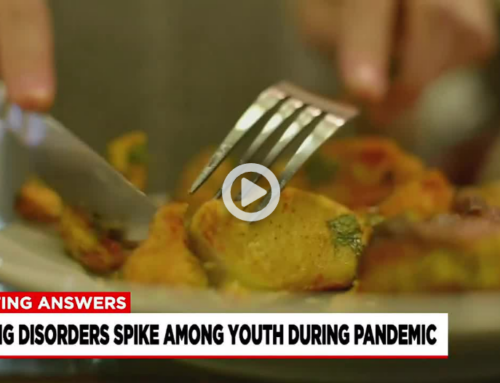Avoidant/Restrictive Food Intake Disorder (ARFID) has been getting more coverage in the media. While more and more people are becoming aware of this serious condition, it is still misunderstood and under-diagnosed. Many doctors tell parents that their child will grow out of the picky eating ‘phase.’ Picky eating can be a piece of this diagnosis, but there can be many other layers that complicate this condition.
Here are some helpful facts about ARFID that you may not have known.
ARFID is an eating disorder listed in the DSM-5
ARFID is a diagnosable eating disorder that is in the Diagnostic and Statistical Manual of Mental Disorders 5th Edition (DSM-5). It is defined by a lack of interest in or engagement with food. It can also include an aversion to food due to possible side effects of eating such as vomiting, choking or getting sick.
ARFID is more than just picky eating
In actuality, ARFID manifests as intense fear and avoidance of food or food groups as opposed to someone who doesn’t like veggies. Those who live with ARFID often avoid certain food textures, smells and colors because of sensory characteristics. Other times, ARFID can stem from trauma around food. For example, if a child eats a peach and chokes on the pit, that incident may lead them to avoid any foods that could recreate that scenario of choking. Examples may be orange foods, foods that have pits or any types of fruit.
ARFID doesn’t just impact children
Per the above point, ARFID symptoms are often dismissed as picky eating. As such, ARFID diagnoses often “fly under the radar” and continue throughout life. Adults with ARFID may avoid social situations that involve food or meals because they are self-conscious of their limited palette. Shame or embarrassment can increase anxiety and isolation which can make it difficult to get proper support.
ARFID symptoms may look similar to anorexia, but with one important distinction
Children who present with ARFID symptoms may lose weight and/or fail to gain weight in a similar way to children with anorexia. Anorexia is categorized by the fear of weight gain and the presence of a body image disturbance. Conversely, individuals with ARFID are typically not trying to lose weight. In fact, many people with ARFID (especially children) are very aware that they are smaller than their peers and want to gain weight.
*Of note, an individual does not need to be underweight to be diagnosed with ARFID.
ARFID can impact all food choices.
People with ARFID do not typically restrict food based on caloric value or how ‘healthy’ they are. Some clients avoid all fruits, others may have a hard time with creamy foods like yogurt. Some people may avoid crunchy foods or strong-smelling foods.
If you or someone you love is showing signs of ARFID, we are here for you.
Our empathetic and experienced team of care professionals can help you. We use evidence-based approaches that can increase comfort around fear foods. We also help our clients to build a more robust menu of palatable foods.
####
Maggie Gebo, MA (she/her/hers) is an adult PHP/IOP clinician at Walden Behavioral Care’s Waltham location. Maggie earned her Masters Degree in mental health counseling at Lesley University with a specialization in Expressive Arts Therapy. She is always looking to incorporate the arts (in plural!) into her practice with clients. Maggie’s clinical background includes women, elders, and special education. Prior to clinical work, Maggie studied theater and costuming, and in her spare time, she enjoys hiking, writing, sewing and cosplay.






